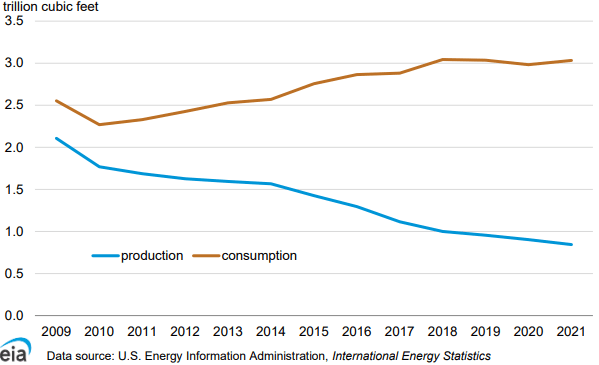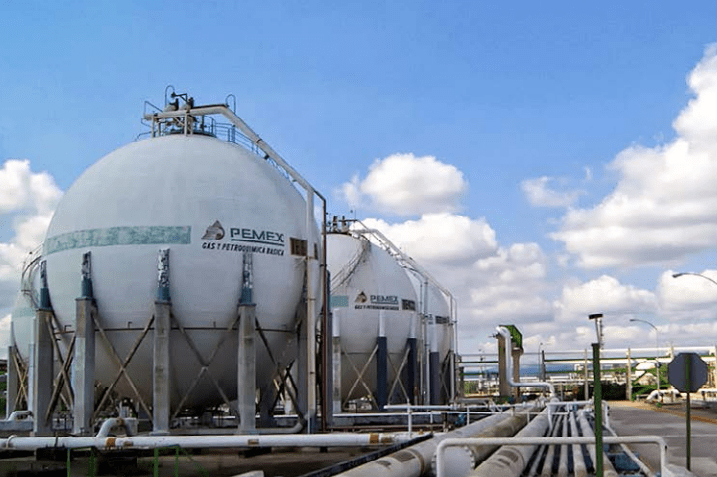Mexico had 7.1 trillion cubic feet (Tcf) of proven natural gas reserves in January 2023, according to the U.S. Energy Information Administration (EIA).
Mexico’s southern region, mainly the Southeast Basin and the Veracruz Basin, contains most of the country’s proven reserves.
At the same time, technically recoverable shale gas resources are much smaller than the total resource base due to the geological complexity and discontinuity of Mexico’s onshore shale zone.
Mexico produced 0.8 Tcf of dry natural gas in 2021, the lowest volume since the 1980s.
Mexico’s dry natural gas production and consumption, 2009-2021

Natural gas in Mexico
Although the southern region of the country contains most of the proven reserves, the Burgos, Sabinas and Burro-Picachos regions in the north have potential to see reserves grow in the future.
While Mexico’s dry natural gas production declined each year from a peak of 2.1 Tcf in 2009, consumption increased steadily over the same period, EIA reports.
Like oil production, private production accounted for 5% of total natural gas production in 2022, with Pemex producing the rest.
Private natural gas production was less than 1% of production in 2017.
Energy
Natural gas is mainly used for residential and commercial heating and in electricity production.
Also, natural gas has become an increasingly popular energy source in the United States for both consumers and industry.
However, because natural gas can be used as a substitute for coal and oil in certain circumstances, the price of coal and oil influences the price of natural gas.
The level of global industrial activity influences the demand for natural gas.
Demand for natural gas has traditionally been cyclical, with higher demand during the winter months and lower demand during the relatively warmer summer months.
According to Morgan Stanley Finance, seasonal temperatures in countries around the world can also greatly influence natural gas demand.
Global natural gas supply is concentrated in the former Soviet Union, the Middle East, Europe and Africa.
In general, natural gas supply is based on competitive market forces.
Insufficient supply at any given time leads to price increases, which signals to producing companies the need to increase the supply of natural gas to the market.

